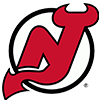This Week's Scouting Tip: Like Fine Wine ... Better With Age?
Most baseball followers are familiar with the age standard for hitters - players reaching age 27 - give or take a year - often experience breakout seasons, assuming they have the raw skills to produce at a high level. Pitchers have similar tendencies, however they are more likely to progress along different timelines based on their pitching style and their experience level at the various points on that timeline. Therefore, it's a good idea to consider player age when evaluating anticipated pitching performance for this year and in the future. Let's take a look ...
Exploring it further:
Age and the experience timeline are inseparable ...
Two pitching prospects are assigned to their team's Low-A affiliate. Both have similar levels of pro experience, and both appeared to adjust well and provide solid numbers for their new teams. They are both "power" pitchers, they demonstrate good command, allow less than a hit an inning, provide respectable walk rates, and strikeout just over one batter an inning. All things considered, they are relatively equal as prospects. Right? Perhaps not. Player A is 19 years old and was drafted out of high school while Player B is 23 and came out of a well-developed college program. Based on age and experience, Player A probably has considerably more upside. At the Low-A level, most players are 18-19 year olds so Player B has a considerable advantage in both physical maturity and experience. If
This Week's Scouting Tip: Like Fine Wine ... Better With Age?
Most baseball followers are familiar with the age standard for hitters - players reaching age 27 - give or take a year - often experience breakout seasons, assuming they have the raw skills to produce at a high level. Pitchers have similar tendencies, however they are more likely to progress along different timelines based on their pitching style and their experience level at the various points on that timeline. Therefore, it's a good idea to consider player age when evaluating anticipated pitching performance for this year and in the future. Let's take a look ...
Exploring it further:
Age and the experience timeline are inseparable ...
Two pitching prospects are assigned to their team's Low-A affiliate. Both have similar levels of pro experience, and both appeared to adjust well and provide solid numbers for their new teams. They are both "power" pitchers, they demonstrate good command, allow less than a hit an inning, provide respectable walk rates, and strikeout just over one batter an inning. All things considered, they are relatively equal as prospects. Right? Perhaps not. Player A is 19 years old and was drafted out of high school while Player B is 23 and came out of a well-developed college program. Based on age and experience, Player A probably has considerably more upside. At the Low-A level, most players are 18-19 year olds so Player B has a considerable advantage in both physical maturity and experience. If he is a top prospect, he should dominate against this level of competition while Player A is already performing well at an appropriate level.
In today's game, college experience is equivalent to experience in the minor leagues up to about the Low-A level, or in some cases where the college program is advanced, even High-A ball. At this point, I would like to make a statement to always keep in mind based on my years of scouting pitchers ... Performance at Double-A is usually the best predictor of future success in professional baseball. That is where you are most likely to see separation. The cream floats to the top, so to speak. In A ball, the players usually arrive based on raw talent. At Triple-A, the MLB teams tend to use their affiliate as a repository for insurance policies. Many players at that level are fringe performers who amount to organizational depth and typically do not represent the skill set needed to be an everyday player at the MLB level. Once a player proves himself at Double-A, they often have relatively short stays at Triple-A while they wait for an opportunity. Players at Double-A are generally ages 21-24. If younger and performing well, they are probably advanced in their development, and if significantly older, they may be playing catch up from earlier injuries, or they may not be demonstrating the skills needed to carve out a successful MLB career. There are exceptions such as being converted from a position player to pitching, but you always want to carefully monitor Double-A performance.
Some things to watch for when evaluating age and experience:
- All things are not equal. Players should be expected to perform differently based on the level of competition. If a player is older and more experienced compared to the competition, they should generally be expected to dominate. Average performance could equate to a lower ceiling.
- Watch for major adjustments. When a player moves from Low-A or High-A to the Double-A level, its common to see a temporary drop off in performance. There is a large gap in skill levels when making that jump so a transition period is to be expected. If the first half of the first year at Double-A looks bad, but the second half of that season is markedly improved, add that pitcher to your watch list.
- Power pitchers and finesse pitchers usually progress at different rates. Power arms can often get by with their stuff even though they may still be throwers rather than pitchers at this stage of their development. Finesse pitchers don't have that luxury and can be expected to reach their ceiling somewhat later. Be careful not to write off a prospect too early in their developmental timeline.
- Organizations frequently handle their young pitchers differently. Some like to take their time and make sure the pitcher is fully developed before making their MLB debut while others are prone to rush young pitchers. Take that into consideration when evaluating performance. Is the pitcher a quality prospect who just needs more time, or is he experienced but lacking the skills to excel?
Now, let's check this week's Scouting Notebook ...
This continues our regular weekly feature scouting pitchers of interest. We won't normally cover the elite guys here, rather this column is dedicated to finding pitchers who might help, and more importantly, might be obtainable (as well as pitchers to avoid). Alright, let's get started with this week's featured arms:
Mat Latos (SD)vs. PHI- What has happened to 2010 Cy Young contender, Mat Latos? After a spectacular season last year, he suffered some shoulder stiffness this spring, and has now turned in three rather uninspiring starts, including his outing against the Phillies in Petco Park. In that start, Latos threw 107 pitches to get through 4+ innings and never really settled into any kind of rhythm. Interestingly, he had a similar start to 2010 where his command (and effectiveness) was far below expectations. Is there a trend in his early season performance, or is there something more disturbing here?
No question, Latos has exceptional stuff. His fastball routinely sits in the mid 90s, and his power slider is a dominating pitch with two-plane movement. His change up is a bit inconsistent, but as a compliment to his primary offerings, it can be effective. In our target game, Latos simply was not commanding his fastball and the Phillies hitters were patient enough to wait it out. However, the velocity was more or less there and even though the fastball was a bit straight at times, he was able to get it by hitters when he spotted it well. The problem was, that wasn't happening all that often. Virtually all of his strikeouts were swinging strikes on that biting slider while he allowed two home runs on fastballs out over the plate and up in the zone. That's been a significant problem as he has allowed five long ones in just 16 innings so far this year.
Even though he has had shoulder problems in the past as well as this spring, the 2011 struggles do not appear to be a result of an injury. Latos was rushing his delivery which leads to balls staying up, and his release point was not consistent. He has never been known for a particularly smooth delivery, so he is going to be vulnerable to mechanical glitches, and those are generally correctable. With his stuff, he can survive even when he is not fully in synch, however he will have to smooth things out if he is going to keep his pitch counts down and pitch deeper into games. Its frustrating for fantasy owners who probably paid a high price for his services, but Latos will likely be back in the groove before too long so patience is recommended. If you don't own Latos, and his owner is not the patient-type, this might be the time to make some buy-low inquiries.
Brandon Morrow (TOR)vs. TB - Brandon Morrow made his anxiously awaited first start of the season against the Tampa Bay Rays and the results, while not statistically sparkling, were about all you could hope for. On the day, he threw 93 pitches, 58 for strikes, over 5 1/3 innings, but even that ratio is a bit misleading as he was occasionally overthrowing in the first inning before the adrenaline ebbed and he settled into a very comfortable rhythm. He gave up three hits, two walks, and struck out 10 - and they were nasty - while allowing three earned runs (one scored after he left the game).
Perhaps the most encouraging aspect of the start was his free and easy delivery. There was no sign of any lingering soreness as he routinely sat in the mid 90s with his fastball and touched 98 a couple of times. Morrow and Jays pitching coach Bruce Walton have certainly clicked since he came over from Seattle. They adjusted his motion and arm slot, his delivery is fluid now, and he throws his extensive arsenal of pitches in any situation with confidence. In comparing Morrow to the early days, it is easy to see the evolution from thrower to pitcher.
Further, Morrow has matured. In the first inning, he was squeezed on what could have been a called third strike to the lead off hitter resulting in a walk, and he followed that with a fastball that caught too much of the plate that Johnny Damon turned on for a two run home run. Two batters. Two runners. Two runs. There was a time when that could have rattled the right-hander, but he took it all in stride and proceeded to strike out the side. Missed strike calls might continue to haunt Morrow from time to time - his stuff is so dynamic, he frequently fools both the hitter and the umpire. Following that first inning, Morrow continually pounded the strike zone and command was the only missing piece.
Morrow throws a 2-seam and a 4-seam fastball, a cutter, a power slider, a softer curve, and a change - and he changes speeds on all of them. With that repertoire, when he is throwing strikes, he can continually keep hitters off balance while ringing up a large volume of strikeouts. His K/9 last year was the highest of any starting pitcher (and was actually over 13 per 9 innings the second half) so if he stays healthy, he is a prime candidate to lead the league in punch-outs while providing a very good ERA and WHIP. He's a good one now, but he's an ace in the making. The best is yet to come.
Tyson Ross (OAK)@ SEA - Ross is getting a chance to show what he might be able to do with a spot in the starting rotation while filling in for the injured Dallas Braden. Unfortunately, his start against the light-hitting Mariners did little to reinforce his claim to that role. He has probably realized by now that you have to throw strikes, even to the punchless M's lineup, if you want to enjoy success at the MLB level. Only 31 of 76 pitches finding the strike zone is not going to get it.
When he is on, Ross relies on a very heavy, sinking fastball that sits in the low 90s. He can generate a high groundball percentage and if he is getting his off speed pitches over the plate, he is capable of respectable K/9. His problems, as they did in this game, usually arise from a failure to command the strike zone, and a less than desirable differential in pitch velocity. Against Seattle he was throwing his fastball in the 90-93 range, however his breaking pitches were often in the high 80s - not enough difference to disrupt a hitters timing.
Until he can consistently throw at least three pitches for strikes with something off speed to keep hitters from sitting on the fastball, he is probably better suited to a bullpen role. He has the potential to develop, but facing a lineup 3-4 times a game is going to be problematic. Even if he could keep hitters off stride with his better stuff, he will have trouble getting deep into games because of high pitch counts.
While he might be worthy of a spot on a very deep keeper roster, his immediate future at the MLB level is not very promising. He is capable of serving as a swingman/spot starter and he does work in a pitcher-friendly park, however he is not likely to have a fantasy significant role until he develops further. If they want him to start, he needs time in the minor leagues to refine his skills.
Some short takes:
Daisuke Matsuzaka (BOS)- Two consecutive exceptional starts. As usual, they followed a few disasters that spawned speculation that he might lose his spot in the rotation. There is no question Dice-K is capable of dominating opposing hitters - when he is so inclined. The real question is, do you like to ride roller coasters?
Jake Arrieta (BAL)- He is still a bit inconsistent with his command of the strike zone which often leads to high pitch counts and earlier departures, but he has the pure stuff to be a front line pitcher. He might be a very small notch below Matusz, however he has a higher ceiling than Tillman or Britton. He may be on the brink of a breakout.
Joakim Soria (KC) - You have to be at least a little concerned about the early season performance of one of the game's most reliable closers. His velocity is down a bit, and his usual pinpoint command is not what it has been. There haven't been any real health issues raised, however it might be a god idea to monitor his next few outings.
Kid's Corner ...
Phillippe Aumont (PHI)- A long time favorite, Aumont has been bounced between the rotation and the pen, and he really struggled last year. Now with a defined path, he has gotten off to a solid start as a reliever with the Double-A Reading Phillies. In his first six 2011 appearances spanning 7.1 innings, he has allowed one hit and two walks while striking out nine. He has both closer stuff and a closer mentality, so he could move up in the food chain rather quickly. He is a name to track in keeper/dynasty leagues.
For some of the most in-depth coverage of all things pitching in fantasy baseball for 2011, visit www.bogfella.com and be sure to follow @RotoWire and @bogfella on Twitter.


























